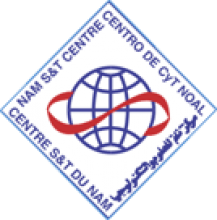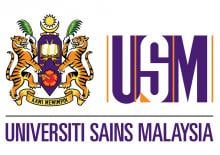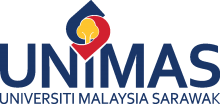Science
News

23 Nov 2006
A revolutionary free scientific recruitment initiative has been launched under the new brand of naturejobs.com by Nature magazine, the premier science journal.

22 Nov 2006
In order to provide to the specialists and professionals from the developing countries a platform for an interactive dialogue, the NAM S&T Centre is organising a 5-day International Roundtable, jointly with the Centre for Disaster Mitigation & Management (CDMM) and Vellore Institute of Technology (VIT)

22 Nov 2006
Many developing countries are at the crossroad in understanding the implication of new policy contexts and create S&T policies that are interlinked with production and service sectors, competition and other national public policies.

20 Nov 2006
Members of the Tokyo University of Science teaching staff were among the recipients of the recent "Tetrahedron: Asymmetry Most Cited Paper (2003-2006) Awards".

20 Nov 2006
Professor Kenso Soai is the first Japanese national to be elected as an Honorary Member of Italy's Modena National Academy of Science, Letters and Arts. He specializes in research on asymmetrical autocatalytic reaction in the field of organic chemistry.

19 Nov 2006
MCSv6 introduces a new Network Address Translator (NAT) traversal solution that allows clients behind NAT to automatically send and receive multimedia data. The solution transientsly detects the user's settings and allows the user to successfully send and receive data.

19 Nov 2006
Summaries of newsworthy papers include Nanomaterials for imaging and therapy – Nature Materials, High times for memory – Nature Neuroscience, An unexpected mechanism of pain – Nature Neuroscience, Auditory repetition and dyslexia – Nature Neuroscience

15 Nov 2006
Around 60 percent of the world population reside in this Asia Pacific region, where 50 percent of the world’s disaster was recorded during past past two decades. This publication aims at identifying areas of mitigating flood, cyclone and storm surge disaster.

15 Nov 2006
A detailed analysis of Neanderthal DNA provides a unique insight into the genetic changes that accompanied the transition from early hominid to modern man. The study, reported in this week’s Nature, paves the way for a Neanderthal genome-sequencing effort.

15 Nov 2006
Researchers have discovered two mutations in the H5N1 avian influenza virus that enable it to recognise human receptor proteins. The amino acid changes, might prove useful molecular markers for assessing the pandemic potential of H5N1 samples.

15 Nov 2006
Treatments for muscular dystrophy, Five grand challenges for safe nanotechnology, Predicting the endpoint of earthquake ruptures, Infant burial by early modern humans, Discovery may help defeat gypsy moth, Flushing submarine canyons, Graphene in a spin

13 Nov 2006
Richard Mukabana has collected empirical data that dispels the myth that bush clearing can control mosquitoes and has assembled crucial evidence that provides a basis for amending a policy that is not practical or effective in tropical Africa.

12 Nov 2006
Summaries of newsworthy papers include Molecule required for bone repair identified – Nature Genetics, Problems with a potential Alzheimer disease treatment – Nature Neuroscience

08 Nov 2006
The social and economic development of a country is closely linked with the understanding and application of science and technology by its people. Science centres and museums play a vital role in communicating basic scientific information to the people and help them make informed choices.

08 Nov 2006
Climate change: New Antarctic ice core yields detailed climatic insights, Infectious disease: SIV endemic in wild gorillas?, Neuroscience: How to keep a steady eye, Astronomy: Moon’s surface shaped by ‘recent’ gas release? and finally… Chillies and spiders share similar scare tactics

06 Nov 2006
The Environment is a major concern in many Asian countries. ResearchSEA is launching Focus on The Environment to highlight the experts and research related to the Environment.

06 Nov 2006
The possibility of higher concentration of contaminants in buses and air-conditioned buildings pose potential health problems to users and occupants.

05 Nov 2006
Summaries of newsworthy papers from Nature and Nature Research Journals include: DNA sequencing reveals bacterial evolution in the lab, Kidney disease caused by mutation may be reversible, Benefits of fever, Redefining receptor organization – again.

03 Nov 2006
Scientific benefits to the member countries of the Centre For Science And Technology Of The Non-Aligned and Other Developing Countries include participating in policy decision, financial support, news dissemination and many more

02 Nov 2006
The hepatitis C virus infection is estimated to affect 170 million people around the world. The researchers aim was to analyse if the new induction therapy with twice-daily IFN-ß is better than once a day CIFN therapy for a period of 6-months for chronic hepatitis C.

02 Nov 2006
The project aims to develop innovative alternative technologies that utilize pollution-free solar light energy as the most abundant, efficient and environmentally-harmonious energy resource. The TOSLEC-1, hosted jointly by Tokyo University of Science (TUS) and Nissan Science Foundation, was held at Tokyo University of Science.

01 Nov 2006
An unprecedented look at the prospects for science and technology in the Muslim world is offered in Nature's News section this week.

01 Nov 2006
Having your cake and eating it too, ‘Silver bullet’ strategies due a rethink, Rock-solid support for ‘Snowball Earth’ theory, The benefits of sleeping around, Tiny mirrors chill out, New sonic hedgehog receptor, Maize fungal genome deciphered, ‘Export’ protein structure unveiled, Policing every egg you lay

31 Oct 2006
The research team from a joint research program of Tokyo University of Science (TUS)and the Japan Science and Technology Agency have succeeded in producing hydrogen from water through the use of gallium nitride (GaN) crystals for the first time.

29 Oct 2006
The focus of this paper is on two activities that are related to the management of international river basins. The first of these is a scientific report, which is now more than five years old and focuses on the management of the waters of this region of the Middle East. The second is the Rosenberg International Forum on water policy

29 Oct 2006
Magnetic cooling demonstrated in a gas, A step towards quantum networks, Seeing the benefits of nanoceria, A potential male contraceptive, Towards a complete human ‘epigenome’, Small RNAs drive evolution, Genetic risk for schizophrenia and brain function, Knocking out false positives in interaction proteomics

26 Oct 2006
Should willing individuals be allowed to sell their kidneys? Yes, according to a Viewpoint article in Nature Clinical Practice Nephrology, which argues that failure to regulate kidney sales could be unethical. Abdallah S Daar asserts that the traditional moral arguments against payment for organs are difficult to sustain under close scrutiny.

25 Oct 2006
The compilation of a list of mammals of Borneo has come a very long way. This on-line checklist owed to many previous European travelers, traders, colonial officers, museum collectors, curators and biologists describing those species that are known to us today.

25 Oct 2006
Nuclear forensics, Global cooling preceded life on Earth, DNA degradation link to rheumatoid arthritis, Lampreys, the supreme survival specialists, The conductivity of mantle minerals, Largest avian skull runs rings around agility theory

22 Oct 2006
Summaries of other newsworthy papers from Nature include Inducing connections between brain sites alters motor function - Nature, The bottom line for silk - Nature Materials, Bittersweet news for neural stem cell grafts - Nature Medicine, TAPping into mammalian interaction proteomics - Nature Methods
Giants in history
Chinese biochemist Chi Che Wang (1894 - 1979), one of the first Chinese women to study abroad, advanced to prominent research positions at American institutions including the University of Chicago and the Northwestern University Medical School.
Ruby Sakae Hirose (1904 – 1960) was a Japanese-American scientist whose research contributed significantly to our understanding of blood clotting, allergies and cancer.
Chinese electron microscopy specialist Li Fanghua (6 January 1932 – 24 January 2020) facilitated the high-resolution imaging of crystal structures by eliminating interference.
Sálim Moizuddin Abdul Ali (12 November 1896 – 20 June 1987), commonly referred to as the Birdman of India, was the first person to conduct systematic surveys of birds from across India.
Haisako Koyama (1916 – 1997) was a Japanese solar observer whose dedication to recording sunspots – cooler parts of the sun’s surface that appear dark – produced a sunspot record of historic importance.
Michiaki Takahashi (17 February 1928 – 16 December 2013) was a Japanese virologist who developed the first chickenpox vaccine.
Toshiko Yuasa (11 December 1909 – 1 February 1980) was the first Japanese female physicist whose research on radioactivity shed light on beta decay – the process in which an atom emits a beta particle (electron) and turns into a different element.
Angelita Castro Kelly (1942-2015) was the first female Mission Operations Manager (MOM) of NASA. She spearheaded and supervised the Earth Observing System missions during its developmental stage.
Malaysia’s first astrophysicist, Mazlan binti Othman (born 11 December 1951) was instrumental in launching the country’s first microsatellite, and in sending Malaysia’s first astronaut, Sheikh Muszaphar Shukor, into space.
Known as Mr. Natural Rubber, chemist and researcher B. C. Shekhar (17 November 1929 – 6 September 2006) introduced a number of technical innovations that helped put Malaysia’s natural rubber industry on the world map.
Shinichiro Tomonaga (31 March 1906 – 8 July 1979), together with Richard Feynman and Julian Schwinger, was awarded the Nobel Prize in Physics in 1965, for their contributions to advance the field of quantum electrodynamics. Tomonaga was also a strong proponent of peace, who actively campaigned against the proliferation of nuclear weapons and promoted the peaceful use of nuclear energy.
South Korean theoretical physicist Daniel Chonghan Hong (3 March 1956 – 6 July 2002) achieved fame in the public sphere through his research into the physics of popcorn.
Japanese chemist Kenichi Fukui (4 October 1918 – 9 January 1998) was the first Asian scientist to be awarded the Nobel Prize in Chemistry. Together with Roald Hoffman, he received this honour in 1981 for his independent research into the mechanisms of chemical reactions.
Chinese palaeontologist, archaeologist and anthropologist Pei Wenzhong (January 19, 1904 – September 18, 1982) is regarded as a founder of Chinese anthropology.
Physicist Narinder Singh Kapany (31 October 1926 – 4 December 2020) pioneered the use of optical fibres to transmit images, and founded several optical technology companies. Born in Punjab, India, he worked at a local optical instruments factory before moving to London for PhD studies at Imperial College. There, he devised a flexible fibrescope to convey images along bundles of glass fibres.
Japanese physicist Ukichiro Nakaya (1900-1962) made the world’s first artificial snowflakes. He started his research on snow crystals in the early 1930s at Hokkaido University, where there is an unlimited supply of natural snow in winter. By taking over 3,000 photographs, he established a classification of natural snow crystals and described their relationship with weather conditions.
The field of solid-state ionics originated in Europe, but Takehiko Takahashi of Nagoya University in Japan was the first to coin the term ‘solid ionics’ in 1967. ‘Solid-state ionics’ first appeared in 1971 in another of his papers, and was likely a play on ‘solid-state electronics’, another rapidly growing field at the time.
Charles Kuen Kao (Nov. 4, 1933 to Sept. 23, 2018) was an engineer who is regarded as the father of fibre optics. His work in the 1960s on long distance signal transmission using very pure glass fibres revolutionized telecommunications, enabling innovations such as the Internet.
Chika Kuroda (24 March 1884 – 8 November 1968) was a Japanese chemist whose research focussed on the structures of natural pigments.
Motoo Kimura (13 November 1924 – 13 November 1994) was a Japanese theoretical population geneticist who is best remembered for developing the neutral theory of molecular evolution.
Meghnad Saha (6 October 1893 – 16 February 1956) was an Indian astrophysicist best known for formulating the Saha ionization equation which describes the chemical and physical properties of stars.
Sir Jagadish Chandra Bose (30 November 1858 – 23 November 1937) was a scientist and inventor who contributed to a wide range of scientific fields such as physics, botany and biology.
Osamu Shimomura (27 August 1928 – 19 October 2018) was a Japanese organic chemist and marine biologist who dedicated his career to understanding how organisms emitted light.
Subrahmanyan Chandrasekhar (19 October 1910 – 21 August 1995) was an Indian astrophysicist who studied the structure and evolution of stars.
Joo-myung Seok (November 13, 1908 – October 6, 1950) was a Korean butterfly entomologist who made important contributions to the taxonomy of the native butterfly species in Korea.
Mathematician Maryam Mirzakhani (12 May 1977 – 14 July 2017) was the first and only woman and Iranian to date to win the Fields Medal in 2014 for her work on curved surfaces.
Sir Chandrasekhara Venkata Raman (7 November 1888 – 21 November 1970) was an Indian physicist who performed ground-breaking research in the field of light-scattering.
Mohammad Abdus Salam (29 January 1926 – 21 November 1996) was a theoretical physicist and the first Pakistani to receive a Nobel Prize in science.
Srinivasa Ramanujan (22 December 1887 – 26 April 1920) was a math prodigy and widely considered one of India’s greatest mathematicians. Despite having almost no formal training in mathematics, he made substantial contributions to mathematical analysis, number theory, infinite series and continued fractions.
Gopalasamudram Narayanan Ramachandran (8 October 1922 – 7 April 2001) is best known for developing the Ramachandran plot to understand the structure of short chains of amino acids, known as peptides.
Hitoshi Kihara (1893 – 1986) was one of the most famous Japanese geneticists of the 20th century. One of his most significant contributions was identifying sex chromosomes (X and Y) in flowering plants.
Chien-Shiung Wu (31 May 1912 – 16 February 1997) was an experimental physicist who made several important contributions to nuclear physics. Wu worked on the Manhattan Project – a top-secret program for the production of nuclear weapons during World War II and helped to develop a process for separating uranium into U235 and U238.
Meemann Chang (born 17 April 1936) is a Chinese palaeontologist who studied the fossils of ancient fish to understand the evolution of life. By examining fossils, she uncovered new insights on how vertebrates, animals with a backbone, migrated from the sea and became adapted to live on land.
Bibha Chowdhuri (1913 – 2 June 1991) was an Indian physicist who researched on particle physics and cosmic rays. In 1936, she was the only female to complete a M.Sc. degree at the University of Calcutta.
Lin Lanying (7 February 1918 – 4 March 2003) was a Chinese material engineer remembered for her contributions to the field of semiconductor and aerospace materials. Lanying was born into a family who did not believe in educating girls and she was not allowed to go to school.
Japanese geochemist Katsuko Saruhashi developed the first method and tools for measuring carbon dioxide in seawater





































